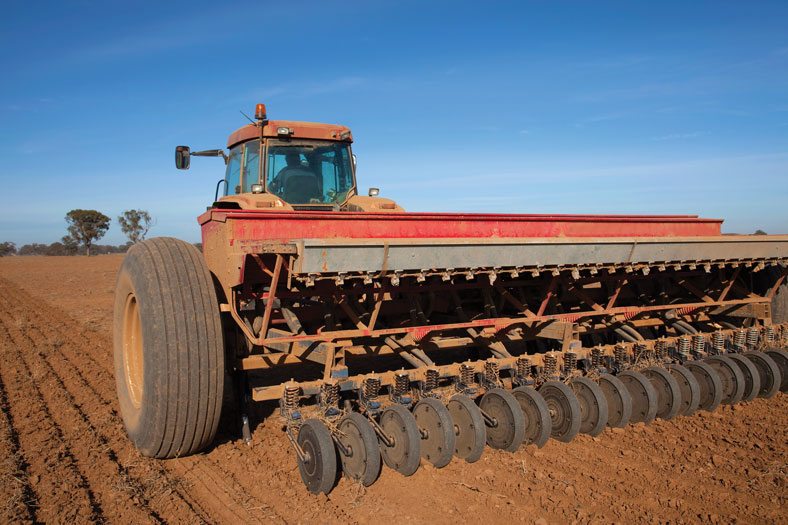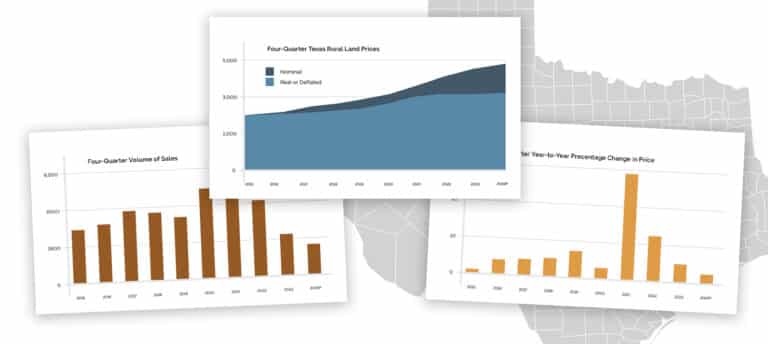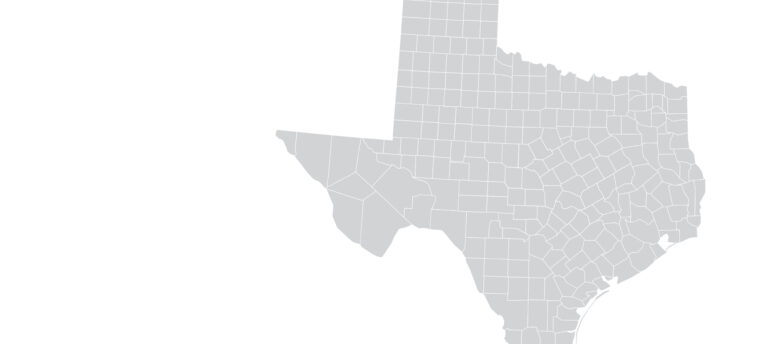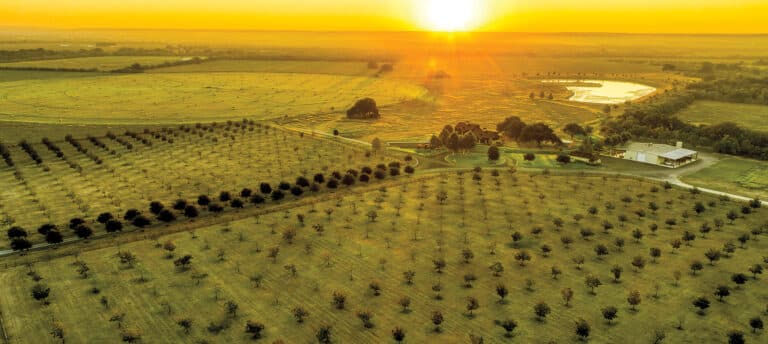It was a similar phone call as many others that I’ve received over the years. “We have been trying to establish some wildlife food plots over the years, using some of the more popular crops that are on the market. Other than one year, we have had very little success getting much results from our efforts and it seems like the return on our investment is questionable, at best.” After an additional five minutes of Q&A, it was apparent that their efforts were destined for marginal results from the get-go. Located in Coke County, the property that was high-fenced about seven years earlier, is in a semi-arid 20” annual rainfall belt, the soils they were planting were marginal for farming, the multiple variety of legumes they were planting were likely being prematurely killed by heavy grazing from deer since the fields could not be temporarily high-fenced, and no fertilizer was being applied. The one year they had “good results” was in 2010, which happened to be an exceptionally wet year. Truth be known, they would have been better off to have put that money and effort into pelleted feed; their expensive forage enhancements strategies were flawed and did not match up well with the variety of crops that they were planting.
Food plots have been a hugely popular deer management practice in various areas of the U.S. for over two decades, including Texas. Three main limiters when it comes to food plot success is farming technique including equipment, soil characteristics, and moisture. The first two of these limiters can be sometimes be controlled or manipulated to some extent. The third variable, however, is generally outside of the manager’s hands, unless they have irrigation capabilities. Here in Texas, perhaps as much as 90 percent of the food plots that are planted for wildlife do not have irrigation facilities in-place. And though there are a wide assortment of warm season, cool season, and perennial type plants available on the market, the reality is that most wildlife managers are not farmers, and many of these plant varieties demand astute farming applications to realize the full benefits of those costs.

Winter wheat
Though not as “sexy” as some of the other more popular and expensive wildlife crops, Texans will be hard pressed to find a cover crop that is more practical and universal than winter wheat. In the cereal grain or short grain family, this plant is relatively drought hardy, often performing well in rainfall belts as low as 17–18”. Wheat is relatively graze hardy and can withstand grazing pressures from deer and even cattle during its early stages without killing it out, it does not require as much farming expertise as some plants, it can grow in fairly diverse soil types, and wheat has multiple benefits and applications for a variety of wild critters.
There are various strains of winter wheat on the market, but the general rule of thumb is to utilize one of the awnless strains, as they are a bit more attractive to wildlife during the seedhead stage. From a nutritional standpoint, wheat offers two tiers of benefits for some species of wildlife. During the growing stages, the leafy portions of the plant are highly palatable and provide upwards of 20 percent crude protein, with fiber levels that may run 25 percent until stem elongation. Energy levels of the seedheads are comparable to corn or grain sorghum, and crude protein of the seeds will generally run about 12 percent. A host of wildlife species consume wheat at different stages of plant growth, including various songbirds, gamebirds, rabbits, squirrels, and deer. Standing mature wheat during the late portion of the summer can also provide excellent protective and loafing cover for broods of quail and turkeys, as well as reptiles, and other wildlife.
Planting
Wheat is relatively easy to plant and establish. For those who are lacking much farming equipment, especially if the plots are less than a few acres in size, soil preparation may be as simple as discing to create exposed loose soil, broadcasting, then dragging the surface to create a seedbed. However, better yet, is to properly prepare the soil, and then plant the seeds using a seed drill. A benefit of the drill is ensuring better consistency of planting distribution, plus the furrow rows allow for better interstitial spacing between plants which creates an improved foraging environment for smaller birds, such as quail and dove. Planting is generally done in the September-October period, generally depending upon moisture conditions. Seeding rates for wildlife should be based on approximately 50-70 pounds per acre if seed is drilled, and as much as 90–100 pounds when broadcasting seed. Planting depth is typically 1–2” when drilling. It’s best to consult with your local Natural Resource Conservation Service office regarding fertilizing recommendations.

Not just a supplement
In addition to providing forage for wildlife, wheat also offers an excellent tool for hunting purposes. When wheat is still in its younger green stage, these plots often act as a magnet for deer. So, locating hunting blinds over these green plots is a great strategy for seeing plenty of deer activity early in the morning and just before dark. From an aesthetic standpoint, deer blinds that overlook wheat fields are considered by some hunters as being more interesting or visually appealing than a blind that simply overlooks a feeder.
Standing or partially standing wheat fields are also excellent locations for dove hunting. By leaving some wheat that is unharvested or uncut, this will provide a seed-source that persists longer into the season, while also offering a bit more hiding cover for hunters who are in the field. These fields are also excellent locations for quail hunters, especially those transitions around field edges that are wrapped by brushy cover.
There are many good options for the wildlife manager who is considering food plots as a tool for forage enhancement. To ensure optimal food plot success, the wildlife manager needs to approach the project in a very similar manner as a farmer. Many of the more popular, and expensive, wildlife seed mixes demand fertile soils, adequate soil moisture, and other best management practices, to ensure good crop production. One of the nice features of winter wheat is that it’s a bit more forgiving regarding certain deficiencies that otherwise would stymie the efforts.
For assistance with your wildlife management or commercial hunting needs, contact the private firm of Wildlife Consultants, LLC at (325) 655-0877, owned by veteran wildlife biologists, Greg Simons and Ruben Cantu.



